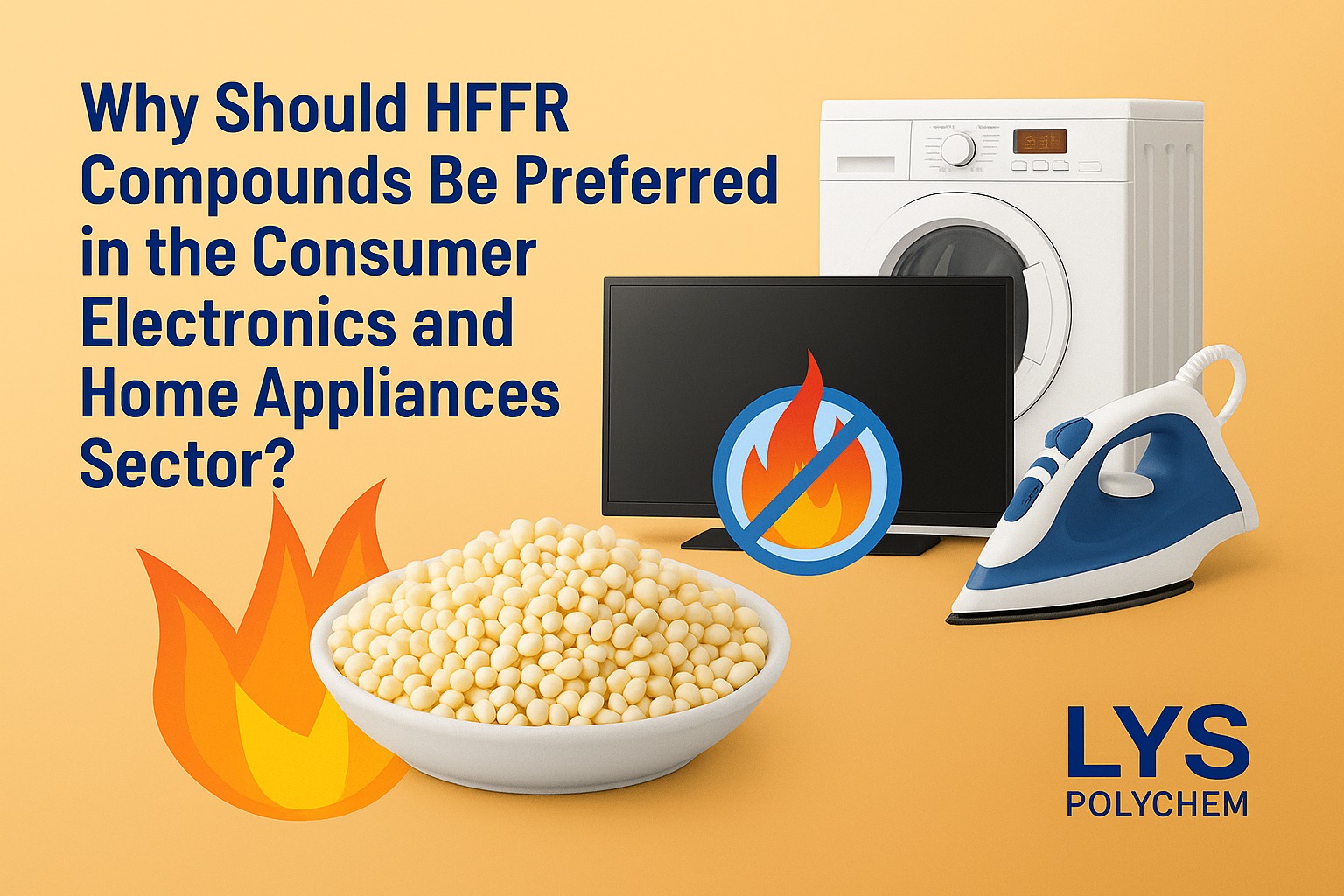LYS Polychem Blog

Why HFFR Compounds Are Essential for Consumer Electronics and Home Appliances
In the modern manufacturing landscape, prioritizing functional performance alongside safety and sustainability is non-negotiable for consumer electronics and home appliance producers. The selection of materials offering superior fire safety and low toxicity is now paramount. Halogen-Free Flame Retardant (HFFR) compounds are rapidly becoming the leading material choice, supporting both technical excellence and crucial goals like regulatory compliance and sustainability.
The Critical Shift: Why HFFR Materials are Crucial
In the past, manufacturers heavily relied on halogen-based flame retardant plastics. However, during combustion, these materials posed significant risks, including the release of toxic, corrosive, and environmentally harmful gases. Evolving regulatory frameworks have restricted their use, compelling the industry to transition to HFFR solutions. These materials not only ensure alignment with global sustainability standards but also provide enhanced protection for equipment and users, especially in compact, heat-exposed, or enclosed operating environments.
1. Mitigating Fire and Toxicity Risks
Market-leading brands committed to reliability are increasingly adopting HFFR compounds. These materials significantly reduce the release of harmful and corrosive gases during a fire event, minimizing potential damage. In home appliances—where cables and multiple components are tightly packed—HFFR is vital for mitigating fire and toxicity risks stemming from malfunctions. By preventing toxic fume release, HFFR compounds lower smoke generation and effectively delay flame propagation.
2. Supporting Global Sustainability Standards
Strict regulatory requirements have progressively restricted halogen-based flame retardants in the electronics sector. Driven by heightened awareness and the sustainability priorities of OEMs and end-users, the adoption of halogen-free, low-smoke, and low-toxicity solutions has accelerated. Ensuring compatibility with sustainability standards for cables, plastics, and installation components is a key priority. HFFR granules facilitate this shift, helping manufacturers meet strict low-smoke and zero-halogen standards across the industry.
Key Technical Advantages of HFFR Compounds
HFFR compounds offer substantial benefits. They are halogen-free, provide robust flame-retardant properties, and are widely used in structural components, cable sheathing, and connectors. Key technical advantages include:
- Self-Extinguishing Properties: Additives such as ATH (Aluminum Trihydroxide) and MDH (Magnesium Dihydroxide) decompose endothermically, actively suppressing flames. These substances allow HFFR compounds to self-extinguish and significantly limit flame spread.
- Enhanced User & Equipment Safety: HFFR materials are engineered to ensure safety in poorly ventilated appliance sections (e.g., control panels). During a malfunction, HFFR compounds protect surrounding sensitive components (PCBs, cables, and sensors) from heat damage and corrosion.
- Reduced Corrosive Gas Formation: In a fire, internal cables and connectors could normally be vulnerable to corrosive gases. HFFR granules drastically reduce the formation of hydrochloric acid, bromine compounds, and other performance-reducing corrosive gases.
- Cost-Effective & High-Performance Alternative: Advancements in flame-retardant technologies have made HFFR compounds a competitive alternative to traditional FR materials. They offer excellent processability for structural parts, extrusion, and injection molding applications.
Common Applications of HFFR Granules
HFFR compounds are essential for critical components where safety and emission control are paramount:
- Home Appliances: Commonly used in control panels, access covers, and internal compartments of appliances like washing machines and dishwashers to minimize smoke and toxicity from cabling malfunctions. They are also crucial for internal wiring harnesses and cable jackets/sheaths to protect adjacent components in case of a short circuit.
- Consumer Electronics: HFFR compounds are preferred in connectors, plugs, PCBs, and internal sockets, particularly in enclosed or compact spaces. They are further utilized in power cords, integrated power supply cables, and densely wired smart devices where critical flame retardancy and reduced toxin emissions are required.
Designing the Next Generation of Safer Devices
In an industry where differentiation must go beyond cost and aesthetics, HFFR compounds enable manufacturers to achieve high fire safety and low toxicity. Companies adopting HFFR solutions can design safer, more sustainable devices aligned with stringent global standards, cementing HFFR's role as a cornerstone of next-generation appliance manufacturing.
LYS POLYCHEM HFFR Solutions provide the optimal balance of safety, performance, and sustainability. Our halogen-free, low-smoke, and high flame-resistant product range ensures maximum reliability in critical applications like control panels, cable systems, and internal structural components. With process-stable, production-optimized formulations suitable for various manufacturing methods, our customers achieve both global compliance and operational efficiency.